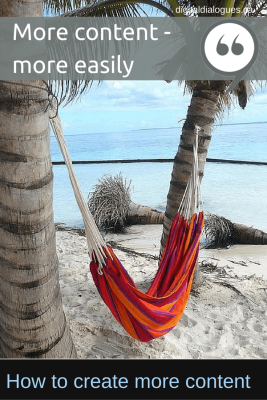
In my last post, I wrote about getting your blogging mojo on. I suggested some ways to smooth the ups and downs of creativity in your blogging. I was talking at the 3,000 metre level about
- scheduling regular posts
- blocking time in your daytimer
- using an editorial calendar plugin
I had also previously posted a checklist to review your post’s content – after you’d written it. This post was a little more granular – a checklist to ensure that you had covered all the blogging technicals before you published a post.
An outline for more content, more easily
[clickToTweet tweet=”Blogging requires effort & thinking; sometimes more than we have time or brainpower for. ” quote=”Blogging requires effort and thinking. Sometimes more than we have time or brainpower for. “]Let’s face it – blogging requires effort and thinking. Sometimes more than we think we have time or brainpower for. That’s where an outline comes in. An outline is a systematic approach to writing. It will help you
- Reduce the time you spend developing a post
- Increase your productivity
- Lower the writing barrier
- Help you structure your thinking before you begin to write
Here’s a blogging outline for you to download
Get your post framework for content creation. This outline is a starting point to organize your thinking and research.
What is your topic?
A tip, a product review, an inspiration, something to DO or something to avoid?
Who are you writing to?
By imagining who you are writing to, you’re creating a persona (also known as a customer profile – but that just sounds too impersonal). Imagine you’re having a conversation with them – describe them -> their interests, their business, their age, and their pain points or problems.
How can you help alleviate their challenges? What information, advice, inspiration or tool do you have that they need?
Offer enough information or inspiration so that your audience will want to come to you for more. For example, if you are a general contractor and you build decks, give some advice on how to achieve the best look for the size of your customers’ backyard. If they are constrained by size, address that problem.
Which URL in your static content will you link to at the end of the post?
You’ve been so targeted in your post, you can now direct your customer or client to a static page that will help identify the specific service that will solve the problem for your customer. Invite them to review some of your work (gallery, if you have one) or link to a page that shows the skills you have to help them.
And finally, how will you promote your post?
Which social media platforms do your customers use? Make sure you connect with them there. Offer your post as a way to help them.
The purpose of this post and the download, was to increase your ability to post regularly and to ensure that you’re contributing content that will help your customers.


